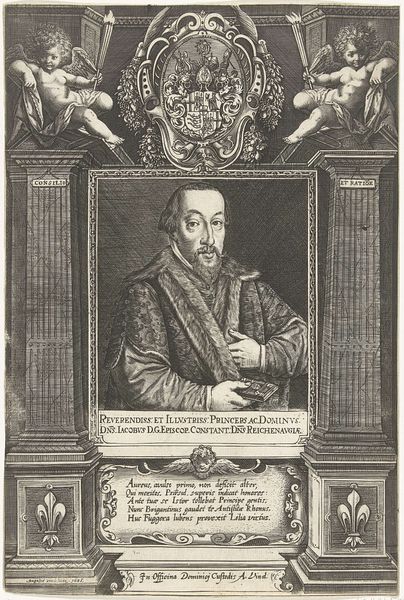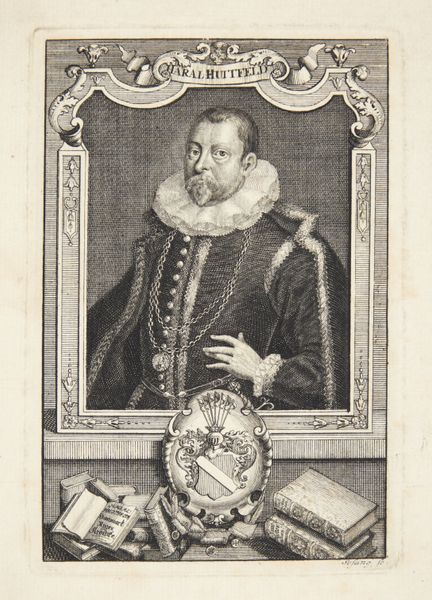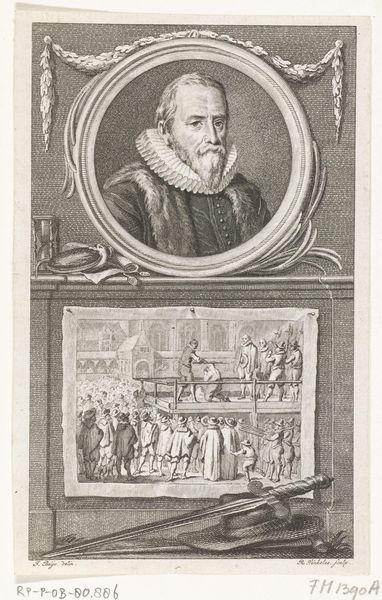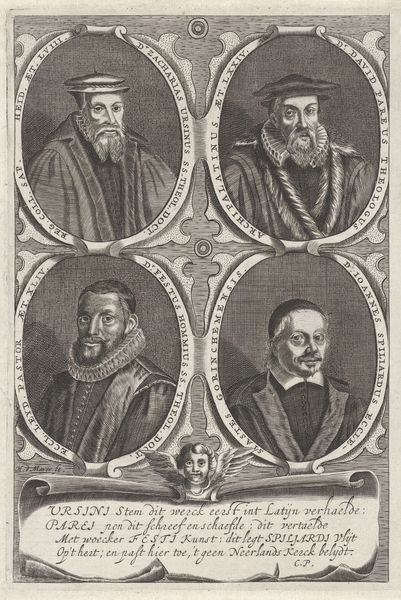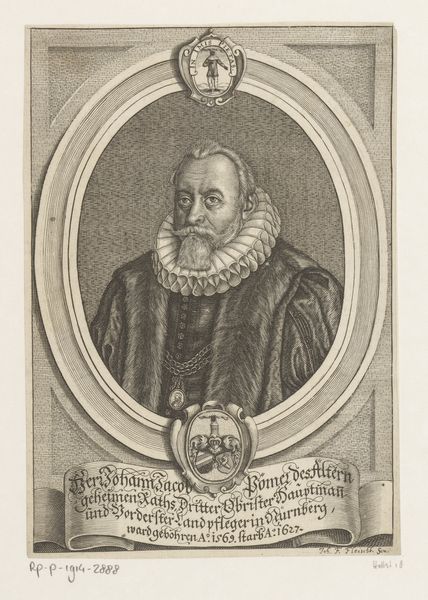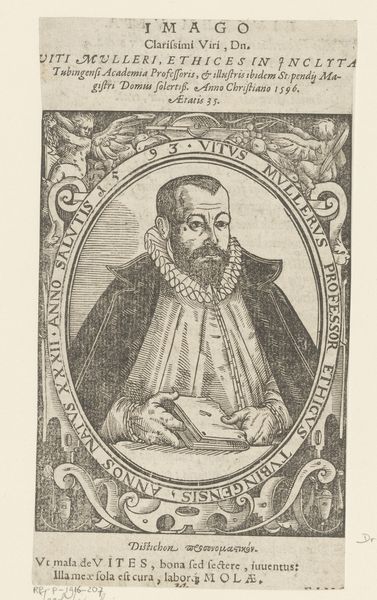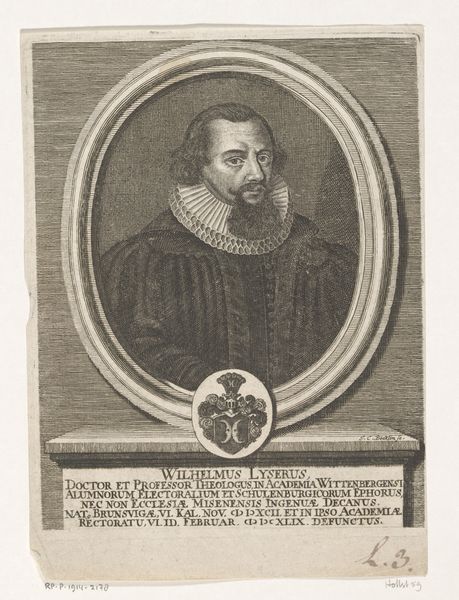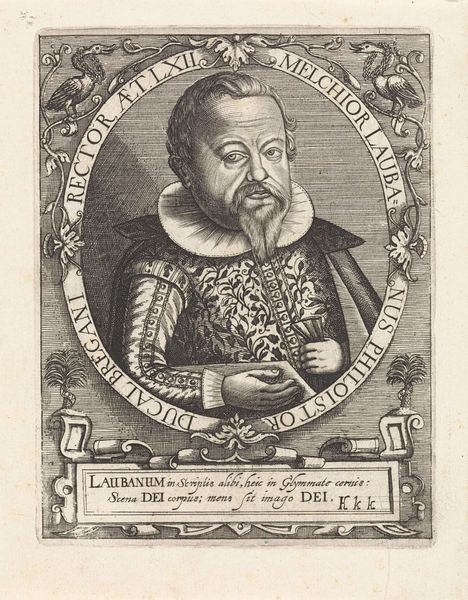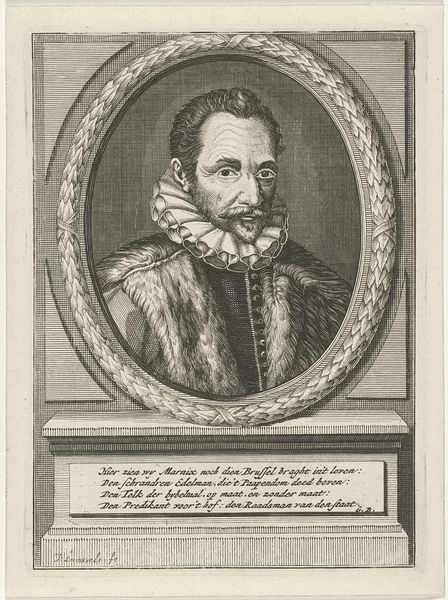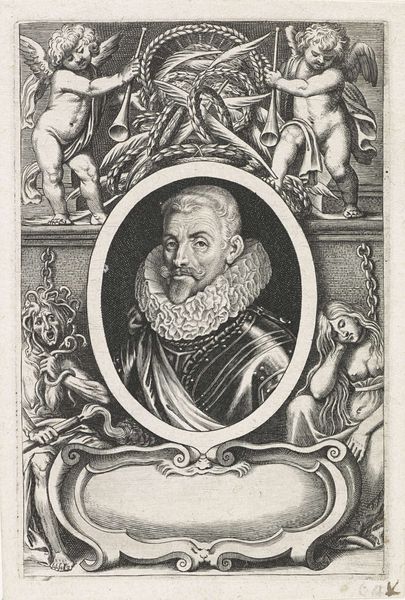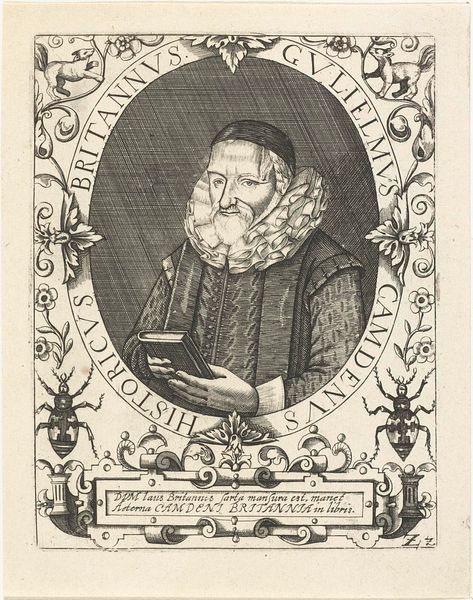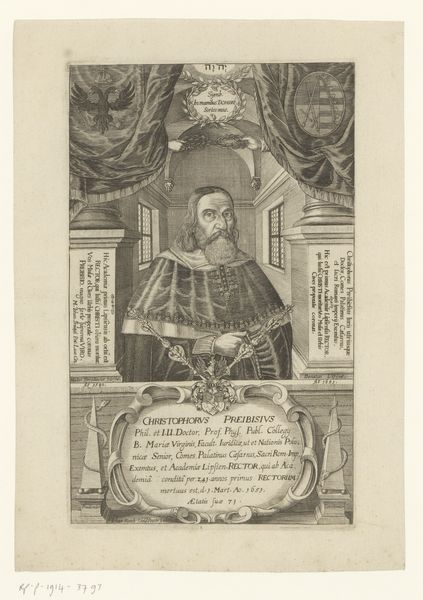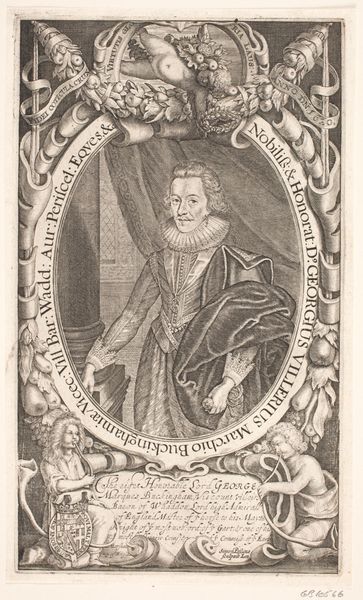
print, engraving
#
portrait
#
baroque
# print
#
engraving
Dimensions: height 310 mm, width 195 mm
Copyright: Rijks Museum: Open Domain
Curator: This engraving from 1674, Michael Burghers’s "Title Page of the Bodleian Library Catalogue", presents a rather hierarchical arrangement of portraits. What’s your initial take? Editor: It definitely feels formal and staged. I see portraits framed within the larger print, all surrounding the central figure of Thomas Bodley. It strikes me as very much a representation of power and academia, maybe even a little intimidating! What do you see in this piece? Curator: Intimidation isn't far off. What this evokes for me is the institutionalisation of knowledge and access, especially considering the Bodleian Library’s role within a profoundly unequal society. Consider the historical moment – the consolidation of power by elites, visible in fashion, architecture and the control of information itself. Who gets represented, how they are represented, and who is conspicuously absent? Those portraits signal exclusivity, wouldn't you agree? Editor: Absolutely. These men were likely patrons and significant figures within the university. How do we consider the broader social context and issues of gender and class, then? Curator: Precisely. Notice there are no women present. This piece becomes not just a portrait of individuals, but a statement about who had a voice – and who was actively silenced – within the scholarly world. Furthermore, engraving itself, as a medium, was expensive, demonstrating wealth and influence. The "Title Page" functions, therefore, as a careful construction of power and privilege. Can we read this image as both an ode to knowledge and a stark reminder of its limitations within the existing social hierarchies? Editor: That’s a powerful way to consider it – framing it as not just about the celebration of knowledge, but also a commentary on who controls it and who gets to participate in its creation and dissemination. I hadn’t thought about the absences so explicitly. Curator: It forces us to consider art as a carrier of ideology, reflecting and reinforcing societal structures of power and inequality. Editor: I’ll definitely carry that with me moving forward. Thanks!
Comments
No comments
Be the first to comment and join the conversation on the ultimate creative platform.
